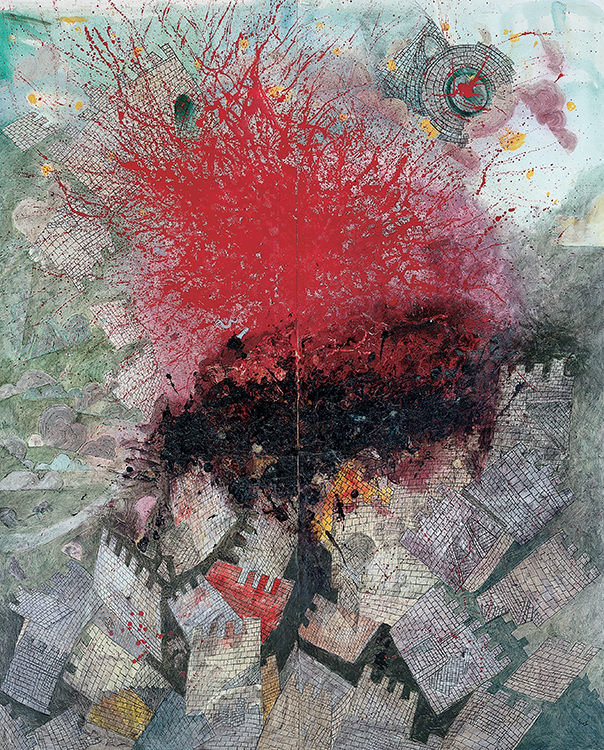- Open Today: 10.00–18.00
- Ticket
- Shop
- Membership
- TR EN

Erol Akyavaş, 1932-1999
Explosion, 1982
Born in Ankara in 1932, Erol Akyavaş dropped out of his studies at the Faculty of Political Science at Ankara University, after which he attended classes as a guest student in the studio of Bedri Rahmi Eyüboğlu at the Fine Arts Academy in Istanbul and took part in its exhibitions. He worked with André Lhote and Fernand Léger in Paris. From 1954 to 1960, Akyavaş studied architecture under Mies van der Rohe at the Illinois Institute of Technology in Chicago, where he had initially intended to study aesthetics and the philosophy of art.
Akyavaş is a well-known figure whose work encompasses traditional Islamic thought and has mystical overtones. He is rare in having managed to create an original synthesis of Western rationalism and Eastern worldviews. In the 1960s, Akyavaş began using religious symbols in his works which combine calligraphy, the urban and architectural forms of miniatures, and religious stories. He also interpreted in a modern visual language words and letters from the old Ottoman script such as elif, lam elif, and vav. Akyavaş defined his works as a process of discovering the beautiful and that which pertains to the beautiful. Departing from the discovery of “the beauty behind the visible” and a desire to attain “the immutable behind the transitory”, both traditional tenets of Islamic thought, Akyavaş emphasized the esoteric aspects of his art.
In works based on the Ottoman miniatures of Matrakçı Nasuh, Akyavaş re-created the stylized realism of miniature painting using the geometric language of modern art.
Painting
Acrylic on canvas
266 x 218 cm
Oya – Bülent Eczacıbaşı Collection
Istanbul Museum of Modern Art / Long-term loan